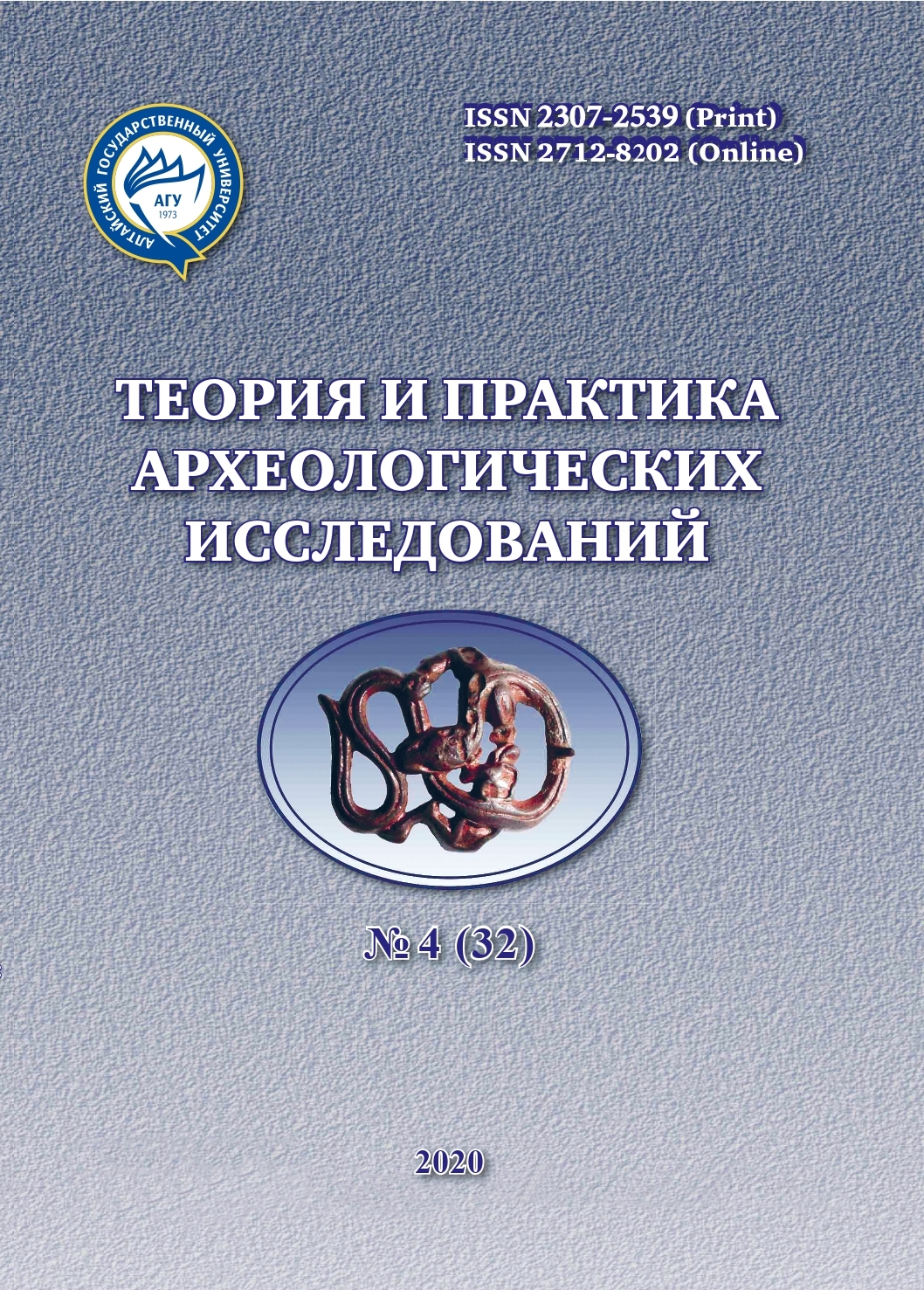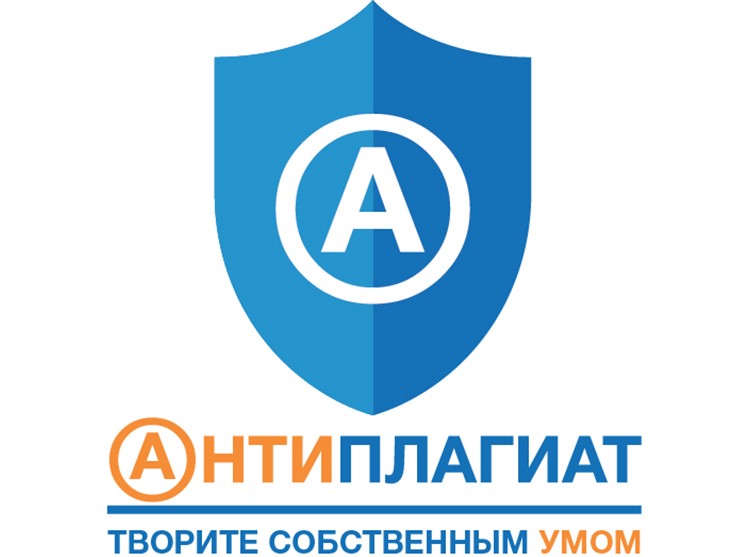ПОСЕЛЕНЧЕСКИЕ КОМПЛЕКСЫ СРЕДНЕГО ДЗЁ:МОНА РЕГИОНА ТОХОКУ: ОБЩИЕ ЧЕРТЫ, ЛОКАЛЬНЫЕ ОСОБЕННОСТИ И ОСНОВНЫЕ ТЕРМИНЫ
Аннотация
За последнее десятилетие в отечественный научный оборот активно вводятся данные по археологическим культурам Японского архипелага начиная с палеолита и до периода Кофун. Эти сведения касаются различных аспектов жизни местных племенных образований. В данном исследовании внимание уделено специфике внутреннего устройства поселенческих комплексов региона Тохоку на протяжении среднего периода эпохи дзё:мон. В статье представлены данные из археологических отчетов по наиболее показательным памятникам этого времени. Некоторые материалы памятников (Саннай Маруяма, Госёно) ранее публиковались в отечественных периодических изданиях, однако подавляющее большинство данных представлено впервые. Основное внимание уделено описанию местоположения памятников, характеристике жилищных котлованов и надземных конструкций, хозяйственных и ритуальных объектов, их расположению относительно друг друга, с кратким упоминанием об обнаруженных артефактах. В основу публикации легли материалы кандидатской диссертации автора: «Средний дзё:мон острова Хонсю (5–4 тыс. л.н.): общие характеристики и локальные особенности» [Иванова, 2018].
Скачивания
Литература
Ivanova D.A. Srednij jōmon ostrova Honshu (5–4 tys. l.n.): obshсhie harakteristiki i lokal’nye osobennosti: diss. kan. ist. nauk [The Middle Jōmon Period of Honshu Island (5–4 thousand years ago): General Characteristics and Local Features: Dissertation … Cand. Hist. Sciences]. Novosibirsk, 2018. 386 p.
Kamifukasawa iseki. Tōhoku jidōsha iseki chōsa hōkoku-sho [Kamifukasawa. Site. Archaeological Report Concerned with Construction of the Tohoku Expressway]. Miyagi-ken bunkazai chōsa hōkoku-sho [Miyagi Prefecture Cultural Heritage Center of Archaeological Report]. Sendai : Miyagi-ken kyōiku iinkai, 1978. Vol. 52. 594 p. (In Japanese).
Kobayashi K. Saikaibuchi iseki to Nishida iseki-no bokō-gun ni tsuite [Groups of Burial Pits from the Saikaibushi and Nishida Site]. Nenpō kōeki zaidan hōjin Yamagata-ken maizō bunkazai sentā [Annual Report of the Yamagata Prefecture Cultural Heritage Center]. Kaminoyama : Ōkaze, 2013. Pp. 58–65 (In Japanese).
Kutsuwada K. Fukushima-ken bunkazai sentā Shirakawa-kan shūzō dogū-no shutsudo jōkyō-ni tsuite [About the Situation of Clay Figurines from Sites from the Collection of the Shirakawa Museum, Center for Cultural Heritage of Prefecture Fukushima]. Fukushima-ken bunkazai sentā Shirakawa-kan kenkyū kiyō [Bulletin of the Shirakawa Museum, Fukushima Prefecture Heritage Center]. Shirakawa : Fukushima-ken kyōiku iinkai, 2010. Vol. 5. Pp. 87–94 (In Japanese).
Matsukidai III iseki [Matsukidai III site]. Akita-ken bunkazai hakkutsu chōsa hōkoku-sho [Archaeological Report of the Akita Prefecture Cultural Heritage Center]. Semboku : Akita-ken kyōiku iinkai, 2001. Vol. 326. 383 p. (In Japanese).
Nishimoto T., Miura К., Sumita М., Miyata Y. Jōmon hie-no nendai [Dare on Request: Age of “Jōmon Millet”]. Dōbutsu kōkogaku [Zooarchaeology]. 2007. Vol. 24. Pp. 85–88 (In Japanese).
Nishinomae iseki hakkutsu chōsa hōkoku-sho [Nishinomae site Archaeological Report]. Yamagataken maizō bunkazai sentā hakkutsu chōsa hōkoku-sho [Research Department of the Yamagata Prefecture Cultural Heritage Center]. Kaminoyama : Yamagata-ken maizō bunkazai sentā, 1994. Vol. 1. 144 p. (In Japanese).
Saikaibuchi iseki dai 1-ji hakkutsu chōsa hōkoku-sho [Saikaibuchi site Archaeological Report]. Yamagata-ken maizō bunkazai sentā hakkutsu chōsa hōkoku-sho [Research Department of the Yamagata Prefecture Cultural Heritage Center]. Yamagata : Yamagata-ken kyōiku iinkai, 1991. Vol. 164 (1). 105 p. (In Japanese).
Sannai Maruyama iseki. Jōmon jidai-no daikibo shūraku [Sannai Maruyama Site. Large settlements of the Jōmon Period]. Aomori-ken kyōiku chō bunkazai hogo-ka Sannai Maruyama iseki hozon katsuyō suishin-shitsu [Protection Department of Sannai Maruyama Site, Aomori Prefecture Cultural Heritage Center]. Aomori : Aomori-ken kyōiku chō bunkazai hogo-ka, 2004. 16 p. (In Japanese).
Sōran Jōmon doki [Handbook of Jōmon Pottery]. Tokyo : UM Promotion, 2008. 1322 p. (In Japanese).
Sugawara T. Yamagata-ken ni okeru Jōmon zidai chūki kōhan-ni shūraku yōsō – Yamagata bonchi seibu o chūshin to shite [The Specifics of the Development of Settlements in the Second Half of the Middle Jōmon, in the Western Part of Yamagata Prefecture]. Yamagata-ken maizō bunkazai sentā kenkyū kiyō [Bulletin of the Yamagata Prefecture Cultural Heritage Center]. 2008. Vol. 5. Pp. 1–17 (In Japanese).
Suzuki K. Tōhoku chihō-no Jōmon shūraku-no shakai soshiki to sonraku [Village and Social Organization of the Jōmon Settlements of Tohoku]. Jōmon shūraku-no tayōsei I: Shūraku-no heisei to chiikisei [The Variety of the Jōmon Settlements: The History of Settlement Development and Local Variants]. Tokyo : Yūzangaku, 2009. Vol. 1. Pp. 51–94 (In Japanese).
Tabarev A.V., Ivanova D.A., Nesterkina A.L., Solovieva E.A. Dzemonskaya tradiсiya monumental’nyh sooruzhenij na Yaponskom arhipelage: istoki, osobennosti, rasprostranenie [The Jōmon Megalithic Tradition in Japan: Origins, Features, and Distribution]. Arheologiya, etnografiya i antropologiya Evrazii [Archaeology, Ethnology and Anthropology of Eurasia]. 2017. Vol. 54(4). Pp. 45–55. DOI: 10.17746/1563-0102.2017.45.4.045-055.
Takada K. Jōmon no ie to mura no fūkei – Goshono iseki [Landscape of Home and Village on Jōmon Culture – Goshono site]. Iseki o manabu [Learn the Ruins]. Tokyo : Shinsensha, 2005. Vol. 15. 93 p. (In Japanese).
Takaseyama iseki (1-ki) dai 1–4-ji hakkutsu chōsa hōkoku-sho [Archaeological Report of the Takaseyama Site from Zone 1–4]. Yamagata-ken maizō bunkazai sentā hakkutsu chōsa hōkoku-sho [Research Department of the Yamagata Prefecture Cultural Heritage Center]. Kaminoyama : Yamagata-ken maizō bunkazai sentā, 2004. Vol. 121 (1). 663 p. (In Japanese).
Chikano iseki hakkutsu chōsa hōkoku-sho [Chikano Site Archaeological Report]. Aomori-shi maizō bunkazai chōsa hōkoku-sho [Archaeological Report of the Aomori Cultural Heritage Center]. Aomori : Aomori-shi kyōiku iinkai, 2002. Vol. 68. 72 p. (In Japanese).
Tokubetsu shiseki Sannai Maruyama iseki [Sannai Maruyama Special Historic Site]. Aomori-ken kyōiku chō bunkazai hogo-ka [Aomori Prefecture Cultural Heritage Department]. Aomori : Aomori-ken kyōiku iinkai, 2015. Vol. 18. 96 p. (In Japanese).
Tominosawa (1) – (2) iseki [Tominosawa 1–2 sites] // Aomori-shi maizō bunkazai hakkutsu chōsa hōkoku-sho [Archaeological Report of the Aomori Cultural Heritage Center]. Aomori : Aomori-shi kyōiku iinkai, 1992. Vol. 143 (5). 250 p. (In Japanese).
Habu J. Sannai Maruyama iseki-no “raifu hisutori” – iseki-no kinō to teijū doto bunka keikan-no hensei [“Life Story” of the Sannai Maruyama Settlement: Changes in the Functions of the Site, Mobility and Cultural Characteristics]. Kokuritsu minzokugaku hakubutsukan chōsa hōkoku-sho [Report of National Museum of Ethnology]. 2002. Vol. 33. Pp. 161–183 (In Japanese).
Heisei 26-nendo hakkutsu chōsa hōkoku-sho [Archaeological report 2014]. Iwate-ken bunka shinkō zaidan maizō bunkazai chōsa hōkoku-sho [Archaeological Report of the Cultural Heritage Center, Iwate Prefecture Development Agency]. Morioka : Iwate-ken bunka shinkō zaidan maizō bunkazai sentā, 2015. Vol. 647. 133 p. (In Japanese).
Tsuji S. Sannai Maruyama iseki no sōjo to hennen [Stratigraphy and Chronology of the Sannai Maruyama Site, Aomori Prefecture, Northern Japan]. Shokuseishi kenkyū [Japanese Journal of Historical Botany]. 2006. Vol. 2. Pp. 23–48. (In Japanese).
Yamada Uenodai iseki, Shōwa 55 nendo hakkutsu chōsa hōkoku-sho [Yamada Uenodai Site, Excavation Report 1980]. Sendai-shi bunkazai chōsa hōkoku-sho [Archaeological report of the Sendai Cultural Heritage Center]. Sendai : Sendai-shi kyōiku iinkai, 1987. Vol. 100. 927 p. (In Japanese).
Habu J. Ancient Jomon of Japan / ed. Rita P. Wright. Cambridge : Cambridge Univ. Press, 2004. 332 p. Jomon Japan. Available at: http://jomon-japan.jp/library /photo/ (Accessed 03.06.2020).
Matsumoto N., Habu J., Matsui A. Subsistence, Sedentism, and Social Complexity among Jomon Hunter-Gatherers of the Japanese Archipelago. Handbook of East and Southeast Asian Archaeology. New York : Springer, 2017. P. 437–450.
Okada Y. Jomon Culture of Northeastern Japan and the Sannai Maruyama Site. Senri Ethnological Studies. 2003. Vol. 6. P. 173–186.
Takada K., Nishikawa K., Asakawa S. Reconstruction of a Jomon Period Sod Roof Pit House: Burnt Pit Dwelling of Goshono Site, Ichinohe Town, Iwate Prefecture (1). Monthly Cultural Asset. 1998. Vol. 417. P. 55–59.
Авторы, публикующиеся в данном журнале, соглашаются со следующими условиями:
a. Авторы сохраняют за собой права на авторство своей работы и предоставляют журналу право первой публикации этой работы с правом после публикации распространять работу на условиях лицензии Creative Commons Attribution License, которая позволяет другим лицам свободно распространять опубликованную работу с обязательной ссылокой на авторов оригинальной работы и оригинальную публикацию в этом журнале.
b. Авторы сохраняют право заключать отдельные договора на неэксклюзивное распространение работы в том виде, в котором она была опубликована этим журналом (например, размещать работу в электронном архиве учреждения или публиковать в составе монографии), с условием сохраниения ссылки на оригинальную публикацию в этом журнале. с. Политика журнала разрешает и поощряет размещение авторами в сети Интернет (например в институтском хранилище или на персональном сайте) рукописи работы как до ее подачи в редакцию, так и во время ее редакционной обработки, так как это способствует продуктивной научной дискуссии и положительно сказывается на оперативности и динамике цитирования статьи







2.jpg)






